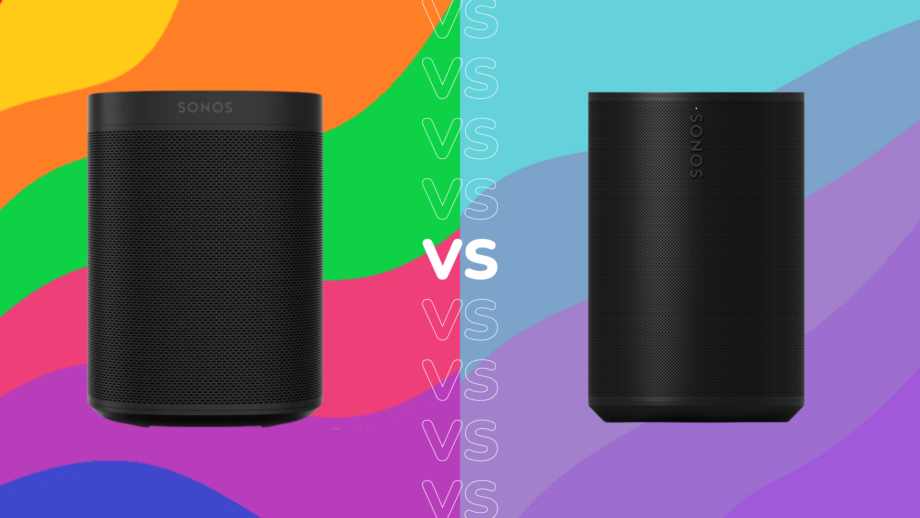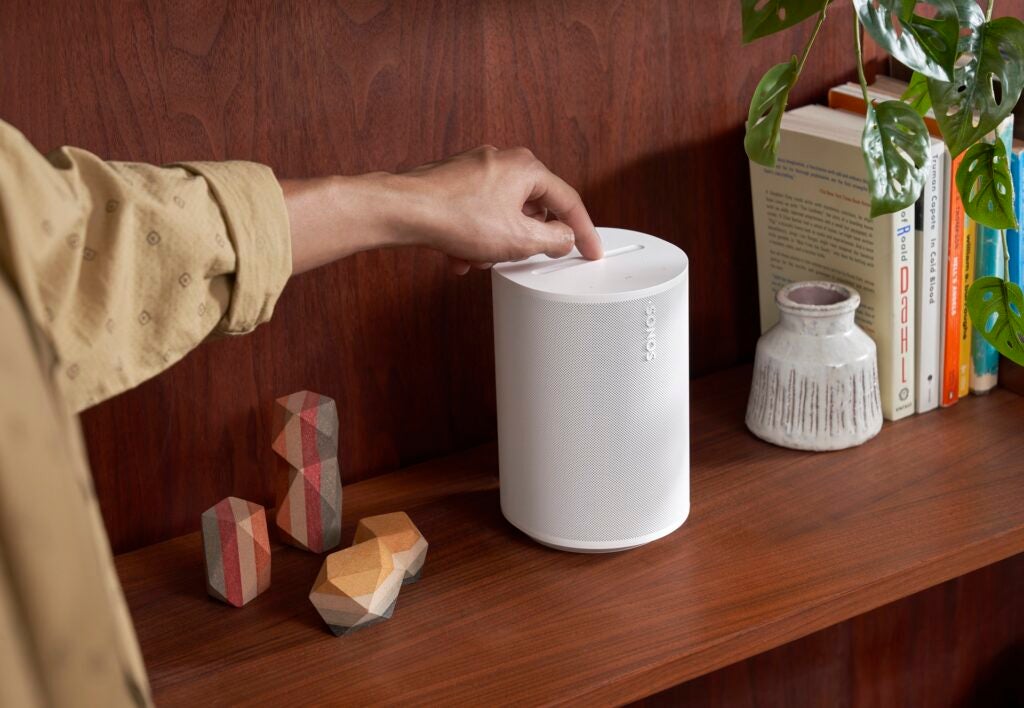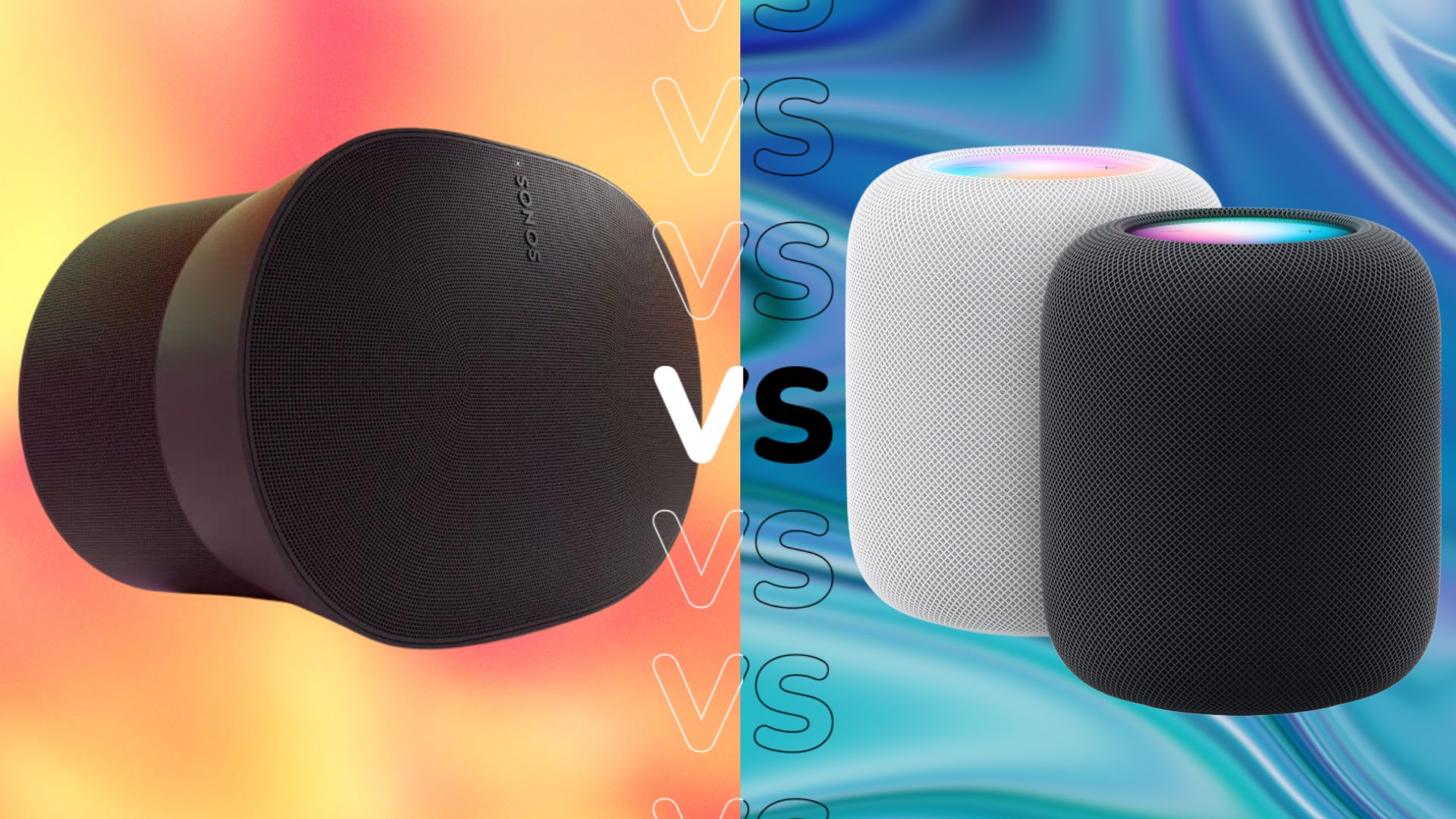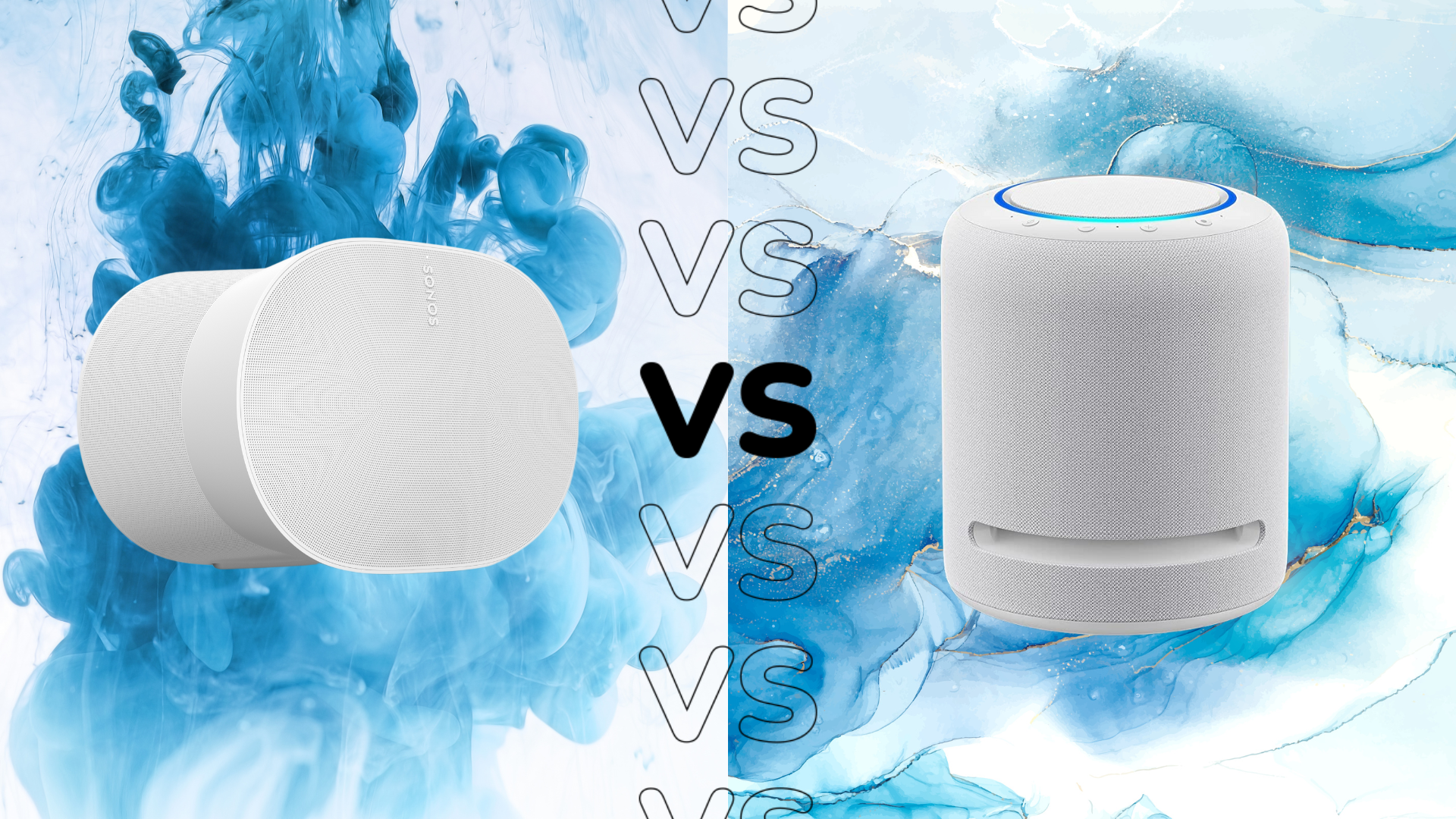Sonos One vs Sonos Era 100: What’s the difference?

Sonos has entered a new era of its speaker range, announcing the launch of two new speakers in the Era 100 and the Era 300.
Rumours have been rife about these speakers since last autumn, and there have been several leaks about what these speakers could be and do. But now we have a clearer idea of the new Era speakers and how they compare to the previous speakers.
The Era 100’s direct comparison is to the current One speaker, and while the Sonos One will continue to be sold, it’ll only be until stocks last. Once that happens, the Era 100 will take over.
So how does the Era 100 compared to the Sonos One? Here are a few ways in which the speaker differs.
The Era 100 produces sound in stereo
The Sonos One is a mono speaker, its driver setup consists of a woofer and tweeter speakers. The Era 100 boosts that configuration to two tweeters and a woofer.

The two tweeters have been angled to disperse sound out into a room and create that stereo effect, while the woofer digs into bass better than the original speaker did, with more weight and punch from what we heard at preview ahead of the announcement.
It doesn’t support Ethernet out of the box
There’s a change in terms of the Era 100’s design compared to its predecessor. The Sonos One had an Ethernet port for hardwiring direct to a router. This brought advantages in a stronger, uninterrupted connection between the speaker and the router for a consistent wireless performance.
The Era 100 has ditched the Ethernet port for a USB-C connection, but you can still connect directly to your router through the Sonos Combo Adapter, which we believe will be sold separately (but we are double checking this).

The Era 100 is more expensive
The price Sonos has settled on for the Era 100 is $50 / £50 more expensive than the Sonos One. Once the One Gen 2 speaker has sold out, the Era 100 will replace and up the cost of getting a Sonos speaker for your home, though the Roam and Roam SL speakers will remain as the most affordable Sonos speakers.
It supports a new version of Trueplay
The niggling issue with Trueplay has been that you need both an iOS device and the patience to walk around a room and wave an iPhone around as if you were performing a sort of room dance. You risked looking just a little silly performing the Trueplay acoustic calibration.
You can now avoid causing curious looks from people in your home as both the new Era speakers support a tweaked version of Trueplay in Quick Tune.

Quick Tune uses microphones within the speaker to understand where it’s been placed and calibrate the sound accordingly. The difference here is that you won’t have to wave your iPhone around; just simply press a button in the Sonos app and wait for 15-20 seconds for the speaker to work its magic.
And with the introduction of Quick Tune, Trueplay can now be performed on Android devices, although only this Quick Tune variant is supported. For non-Era speakers you’ll still need to do the “room dance”, while the portable speakers like the Roam and Move will continue to use Auto Trueplay.
The Era 100 has Bluetooth built-in
We can understand Sonos’ aversion to Bluetooth as that form of wireless communication is not perfect. However, it’s used by so many devices that it would seem rather churlish to not support it. With the Era speakers, Sonos has finally brought Bluetooth 5.0 to its home speaker products, allowing users with any source device to connect directly to the speaker. Sonos’ Roam and Move feature Bluetooth support, but they’re primarily designed to be used outdoors.






